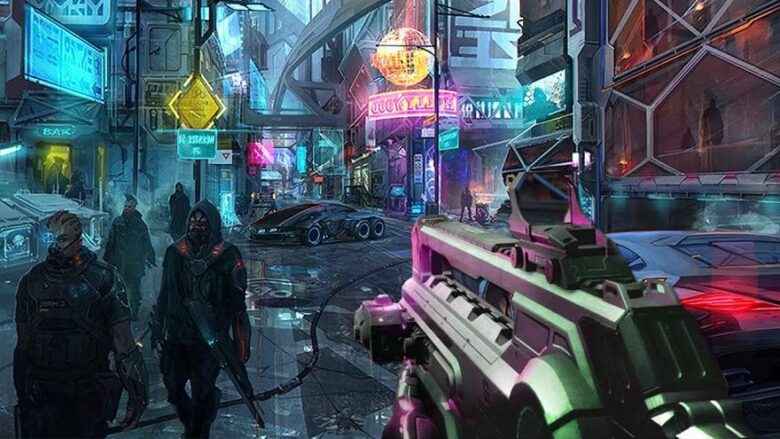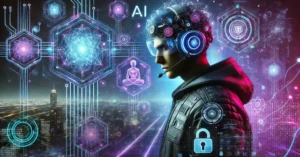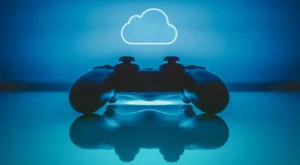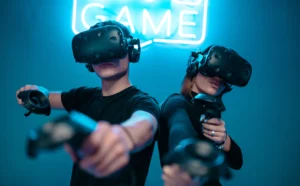The gaming industry is undergoing rapid evolution and continuously exploring new technologies. Ray tracing is one such discovery. It’s a rendering method that represents how light interacts with objects in the virtual world. Unlike other lighting methods, ray tracing simulates the behavior of light in the real world, resulting in incredibly natural-looking shadows, reflections, and textures. Originally used only for high-end Hollywood CGI, this technology is now bringing video game graphics to life. But how does it work? And what makes it so important? This article expands on ray tracing and explores its principles, benefits, and the future of game graphics.
What Is Ray Tracing?
Ray tracing is a method for rendering 3D scenes by tracing the paths of light rays as they bounce off objects. By simulating the natural behavior of light, it creates remarkably accurate shadows, reflections, and refractions. Traditional rasterization, a typical rendering method, attempts to simulate lighting effects but can sometimes result in flat or unnatural results. Ray tracing, on the other hand, identifies the path of each ray of light, creating dynamic and immersive scenes. This technology is a long-standing technique used in the film industry for decades. But thanks to advances in GPU performance, video games can now use ray tracing in real time.
How Does Ray Tracing Work?
Ray tracing is based on a basic concept: light travels in a straight line until it hits an object. The algorithm sends virtual rays from the camera (or from the player’s perspective) into the scene and records how they reflect, refract, or absorb. The system calculates the color, brightness, and direction of the light as it strikes the surface based on the material’s properties. Millions of rays are repeatedly repeated, ultimately resulting in a photorealistic image. However, this computationally intensive process requires advanced hardware. Modern GPUs, such as NVIDIA’s RTX series, feature dedicated ray tracing cores that accelerate these calculations and enable real-time performance.
Why is Ray Tracing so Important in Gaming?
Ray tracing makes in-game graphics look more realistic than ever. Shadows appear softer and more realistic, reflections show objects (even on moving objects), and global illumination makes ambient light appear more lifelike. Games like Cyberpunk 2077, Minecraft with RTX, and Call of Duty: Modern Warfare have leveraged these improvements to create breathtakingly beautiful landscapes that immerse players. Ray tracing enhances the gaming experience by increasing players’ awareness of their surroundings. Realistic lighting helps players more easily recognize hazards and movement. As more developers leverage this innovation, the line between real life and gaming will become increasingly blurred.
Issues with Ray Tracing
Ray tracing has advantages but also challenges. The most significant issue is performance. Simulating millions of light rays in real time requires significant processing power, and if not handled properly, it can lead to frame rate drops. To address this, methods like DLSS (Deep Learning Super Sampling) use AI to make low-resolution images more realistic while simultaneously rendering them faster. Another challenge is accessibility: not all gamers have GPUs that support ray tracing, limiting its widespread adoption. However, as hardware becomes more readily available, these issues will gradually diminish.
Ray Tracing vs. Traditional Rendering
Rasterized rendering has been around for a long time. It uses preset lighting and simpler shadow maps, resulting in faster but less accurate rendering. Ray tracing offers greater realism because it dynamically calculates how light interacts with objects, but it consumes significant processing power. Hybrid approaches, such as ray-traced shadows and rasterized lighting, offer a balance between performance and visual quality. As GPU performance improves, pure ray tracing could become the norm. However, many games currently use a combination of both approaches.
The Future of Ray Tracing in Gaming
The future of ray tracing looks bright. With hardware-accelerated ray tracing now available on next-generation consoles like PlayStation 5 and Xbox Series X, more and more developers are adding ray tracing to their games. NVIDIA’s DLSS 3.0 and AMD’s Full Rendering Scaling are two examples of AI-driven upscaling that will further improve gaming performance. Additionally, path tracing, a more advanced ray tracing technique, can transform game visuals by automatically tracing the path of each ray.
Conclusion
Ray tracing isn’t just a visual enhancement; it’s an entirely new interpretation of real gaming. By accurately simulating how light propagates, it creates realistic, immersive environments that were previously unattainable. While challenges remain, such as hardware requirements, advancements in GPU technology and AI upgrades are rapidly addressing these issues. As more games embrace ray tracing, players can expect increasingly beautiful and dynamic graphics. This new technology is highly appealing to both casual gamers and tech enthusiasts. The question isn’t if ray tracing will become mainstream, but when.
FAQs
1. Will ray tracing slow down gaming?
Yes, ray tracing requires significant processing power and can lower frame rates. However, technologies like DLSS and FSR use AI to make games run more smoothly, preventing performance drops.
2. Which graphics cards support ray tracing?
Ray tracing is faster with NVIDIA RTX-series hardware (20-, 30-, and 40-series) and AMD RX 6000 and 7000 GPUs.
3. Can consoles use ray tracing?
Yes, some games on PlayStation 5 and Xbox Series X/S can use ray tracing.
4. Is ray tracing beneficial for all games?
Not all games use ray tracing, but those that do show significant improvements in shadows, lighting, and reflections.
5. Is upgrading to ray tracing worth it?
If you value advanced graphics processing power and have the right GPU, ray tracing will transform the way you play. However, gamers on a budget may want to wait until it’s more widely available and hardware prices drop before considering ray tracing.




